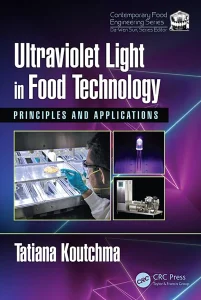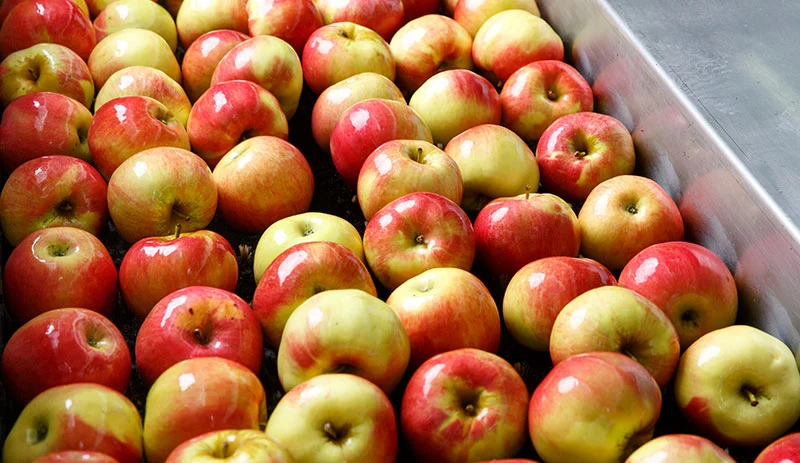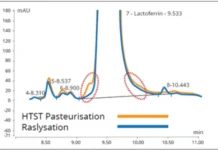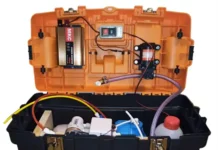IUVA Food and Beverage Safety Working Group
Contact: Tatiana Koutchma, Ph.D. Agriculture Agri-Food Canada, at Tatiana.Koutchma@agr.gc.ca
 Compared to water and wastewater treatments, air disinfection and surface decontamination, the application of UV light for food and beverage products is a relatively new and challenging area. Effective UV treatment for food applications requires alternative approaches to those normally employed for water or air treatment due to absorption and scattering or surface effects that are significantly higher than that of water or air.
Compared to water and wastewater treatments, air disinfection and surface decontamination, the application of UV light for food and beverage products is a relatively new and challenging area. Effective UV treatment for food applications requires alternative approaches to those normally employed for water or air treatment due to absorption and scattering or surface effects that are significantly higher than that of water or air.
UV light can be effective in treating UV transparent or semi-transparent liquids, such as clarified juices and soft drinks, but is less effective in treating turbid liquids with particulates (e.g., apple cider and orange juice) where UV light is strongly absorbed, scattered or reflected. A systematic approach to evaluating UV light technology as an alternative pasteurization, shelf life extension or disinfection method entails consideration of the properties and composition of the food product to be treated; characteristics and correct choice of the UV radiation source; microbial efficiency against pathogenic and spoilage organisms; effects on quality, enzymes and nutrients content; modeling; and commercial and economical aspects, including process validation and regulatory approvals.
Recent research on advances in science and engineering of UV light technology have demonstrated that UV treatments hold considerable promise in food processing as an alternative to traditional thermal treatment for liquid products such as juices and soft drinks or ingredients such as water, sugar syrups, whey protein and raw eggs. It also is promising for pre-processing of raw materials or dry ingredients, post-processing of ready-to-eat meals, shelf life extension method of fresh produce and dry sanitation method in food plants and facilities.
In spite of numerous reports, reviews and manuscripts that are available on particular aspects of UV applications for foods, no recent monograph is available that integrates modern fundamental and practical knowledge about UV light with current food applications and challenges, evaluation of UV systems performance, recommendations for systems design, selection of commercial UV sources, and validation and outlooks for future successful applications. Furthermore, only a few books are available about UV radiation and its industrial applications in water and air treatment, sanitation or any other general aspects that can be related to food applications.
Ultraviolet Light in Food Technology: Principles and Applications now has an updated, second edition that will greatly benefit the food industry, UV technology providers, academia and researchers in the area of nonthermal technologies. The goal of the second amended edition is to integrate fundamental and applied knowledge of UV light generation and propagation in foods and to bring together new available information on UV light processing by summarizing findings of the published studies with commercial applications and regulatory approvals. In addition, it analyzes the concerns and challenges associated with applications of UV light for food in terms of safety and regulatory acceptance.
The book covers technology aspects associated mainly with continuous UV light. This includes numerous technology developments from the last 10 years since the first edition has been published. This edition is intended to provide food engineers, technologists, scientists, and undergraduate and graduate students working in research, development and operations with broad updated and readily accessible information on the science and applications of UV light technology. This book represents the most comprehensive and ambitious undertaking about UV technology for foods that exists to date.
To access the second edition of Ultraviolet Light in Food Technology: Principles and Applications, visit www.crcpress.com
The IUVA Food and Beverage Safety working group explores the latest updates on the science-based validation and commercialization of UV-C technology for food growth, production and transport applications from seed to stomach, as well as UV-C utilization for tea, milk and cold-pressed juice preservation.






